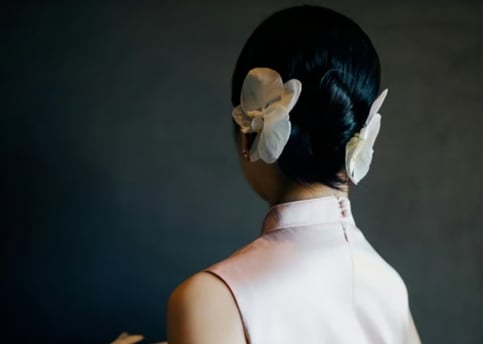When did the qipao become popular
The qipao, though rooted in Qing Dynasty Manchu attire, emerged as an iconic fashion symbol during the 1920s–1940s, reflecting China’s cultural transition and East-West fusion. Influenced by Western styles, 1920s Shanghai designers transformed it into a form-fitting, ankle-length garment with standing collars and side slits, popularized by urban women and media like The Young Companion magazine.
QIPAO HISTORY
6/24/20251 min read


Qing Dynasty Origins (1644-1911)
The qipao originated as traditional attire for Manchu women, known as "qipao" (旗袍), characterized by billowing sleeves, straight silhouettes, and horse-hoof cuffs, sharply contrasting with Han Chinese clothing.
Early Republican Era Modifications (1910s-1920s)
In the 1920s, influenced by Western fashion, designers in cities like Shanghai revolutionized the garment:
Shortened to ankle-length, accentuating female curves
Introduced elements like standing collars, frog buttons, and side slits
The 1925 launch of The Young Companion magazine, which frequently featured the modernized qipao, propelled its adoption among urban women.
Golden Age (1930s-1940s)
1933: Shanghai's "New Life Movement" promoted the qipao as the standard attire for women.
1937: Actress Zhou Xuan donned a qipao made of "Indanthrene" cloth in the film Angel on the Road, sparking widespread adoption among civilians.
1940s: Wartime austerity simplified fabrics, making cotton qipao ubiquitous among intellectuals and students.
Modern Revival (1980s-Present)
Post-reform era: The qipao reemerged as "national attire" at international events (e.g., 1984 Los Angeles Olympics Chinese delegation uniforms).
21st-century designers blend contemporary tailoring with innovations like mini-lengths, open backs, and prints, reintroducing it to global fashion.
Conclusion: The qipao's peak popularity spanned the 1920s-1940s, mirroring China's transition from imperial rule to modern nationhood and the fusion of Eastern and Western cultures.
The popularity of the qipao evolved through several key periods. Though its origins trace back to the Qing Dynasty, it truly emerged as an iconic women's garment and swept across the nation during the 1920s to 1940s. Below are the critical timelines and cultural contexts:


